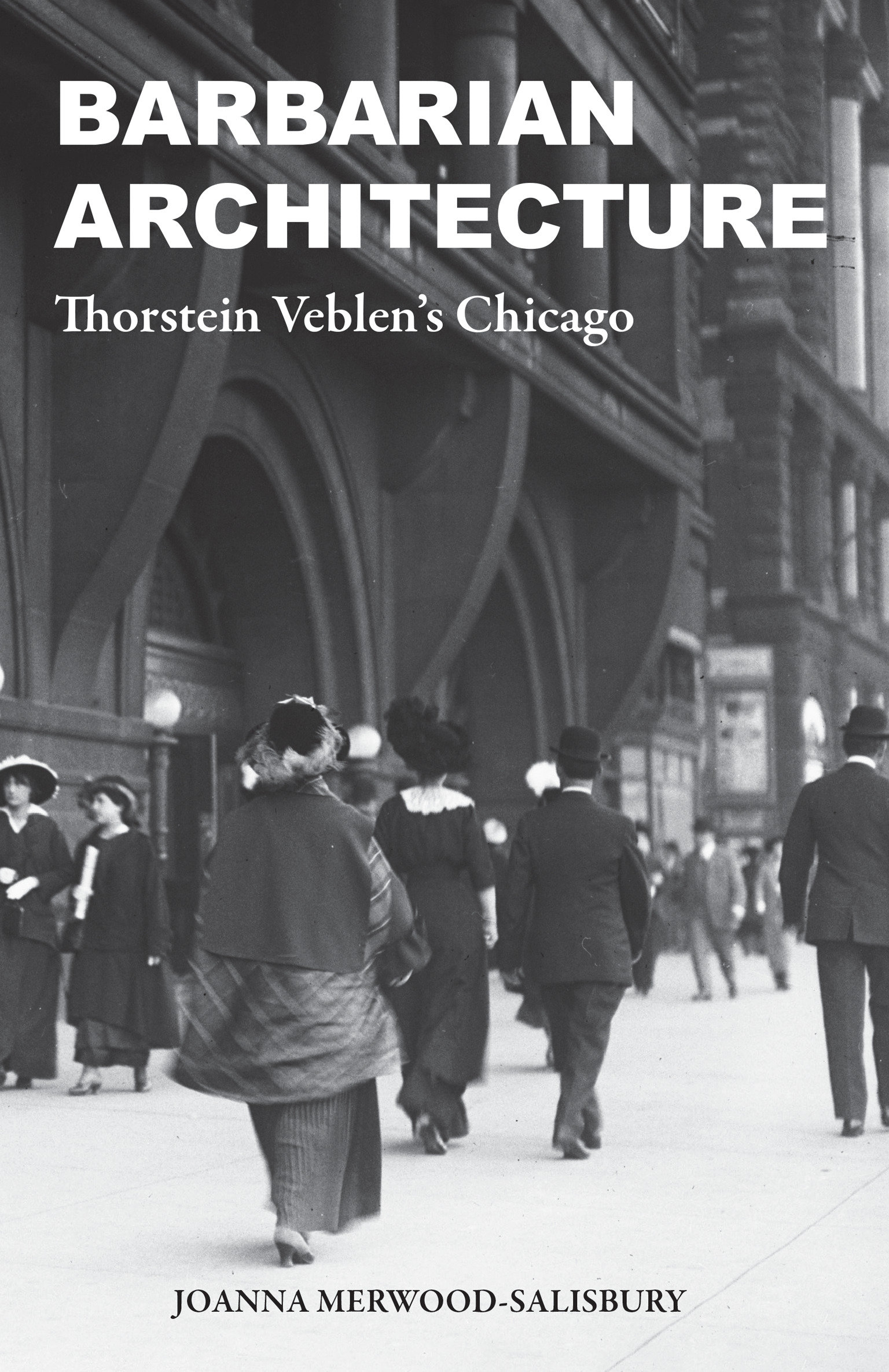Thorstein Veblen’s Chicago: Barbarian Architecture
34.95 JOD
Please allow 2 – 5 weeks for delivery of this item
Add to Gift RegistryDescription
A richly visual architectural history and theory of modernity that reexamines Thorstein Veblen’s classic text The Theory of the Leisure Class through the lens of Chicago in the 1890s.An important critic of modern culture, American economist Thorstein Veblen is best known for the concept of “conspicuous consumption,” the ostentatious and wasteful display of goods in the service of social status—a term he coined in his 1899 classic The Theory of the Leisure Class. In the field of architectural history, scholars have employed Veblen in support of a wide range of arguments about modern architecture, but never has he attracted a comprehensive and critical treatment from the viewpoint of architectural history. In Barbarian Architecture, Joanna Merwood-Salisbury corrects this omission by reexamining Veblen’s famous book as an original theory of modernity and situating it in a particular place and time—Chicago in the 1890s.Merwood-Salisbury takes her title from Veblen’s use of the term “barbarian,” which refers to his belief that Gilded Age American society was a last remnant of a barbarian state of greed and acquisitiveness. Taking an interdisciplinary approach that draws on biography, intellectual history, and historiography, she explores Veblen’s position in relation to debates about industrial reform and aesthetics in Chicago during the period 1890–1906. Bolstered by a strong visual narrative made possible by several of Chicago’s historic photographic collections, Barbarian Architecture makes a compelling and original argument for the influence of Veblen’s home city on his work and ideas.
Additional information
| Weight | 0.5221 kg |
|---|---|
| Dimensions | 2.286 × 14.4526 × 22.5552 cm |
| Author(s) | |
| Format Old` | |
| Language | |
| Pages | 344 |
| Publisher | |
| Year Published | 2024-4-2 |
| Imprint | |
| Publication City/Country | USA |
| ISBN 10 | 0262547414 |
| About The Author | Joanna Merwood-Salisbury is Professor of Architecture at Victoria University of Wellington, New Zealand. She has held academic positions at Parsons School of Design, Bard College, and the University of Illinois at Chicago. Her publications include Design for the Crowd, After Taste, coedited with Kent Kleinman and Lois Weinthal, and Chicago 1890. |
| Other text | “With great precision and insight, Joanna Merwood-Salisbury reveals a previously unexplored dimension of Chicago’s architectural and urban history. She presents the political economist Thorstein Veblen as an astute and at times acerbic cultural critic within the context of Potter Palmer’s ostentatious Gothic “castle,” the Carson Pirie Scott Department Store’s show window displays, the South Side Levee’s vice district, the luxuries of the Auditorium Hotel, and the Chicago River’s monumental grain elevators, among many other telling elements of the city’s visual culture. Through the lens of Veblen, we see Chicago circa 1900 in a state of social degeneration coupled with multiple agendas for reform, haltingly realized in settlement houses and manual training schools, illuminating the complex dynamic between the city’s landscape of ambition, decay, and futility and its reformers’ aspirations for progressive change.”—Gail Fenske, Professor of Architecture, Roger Williams University, author of The Skyscraper and the City: The Woolworth Building and the Making of Modern New York |
| Table Of Content | CONTENTSIntroduction: The Book and the City 1 1 The Ethnology of the Leisure Class 27 2 Pecuniary Culture 753 Mechanisms of Consumption 127 4 The Business of Vice 171 5 New Industrial Institutions 209 Conclusion: Picturing Veblen’s Chicago 259 Acknowledgments 279 Image Credits 281 Notes 289 Index 317 |
Only logged in customers who have purchased this product may leave a review.






Reviews
There are no reviews yet.